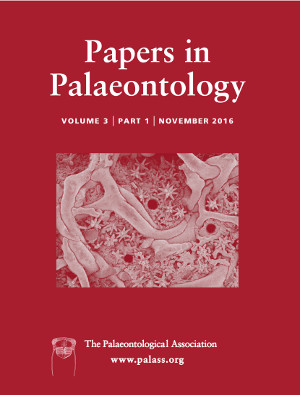Reg. Charity No. 1168330

All specimens of Ichthyosaurus from the Lower Jurassic of Somerset were previously identified as I. communis, an abundant and extremely variable species. Here, two new species of Ichthyosaurus are recognized from multiple specimens. The species are assigned to Ichthyosaurus on the basis of the humerus, pectoral girdle and forefin morphologies. I. larkini sp. nov. is distinguished by a broad jugal with a blunt anterior end that extends as far forward as the middle of the external naris, separating the maxilla and lacrimal; and a unique combination of other features. I. somersetensis sp. nov. is distinguished by a jugal with a nearly straight dorsal ramus that lacks a right‐angle dorsal bend; a high, narrow, crescentic postorbital that forms almost all of the posterior margin of the orbit and separates the jugal dorsal ramus from the orbit; and an ilium that is wide relative to its length, more oblong than rib‐like. The identifications are supported by a phylogenetic analysis which finds the new species more closely related to each other than to other species of the genus. We also identify a squamosal in both species, which confirms that it is present in the genus. This study suggests that hindfin morphology has some taxonomic utility, at least within the genus. The new species increases the diversity of Ichthyosaurus to six species, three of which are found in the Hettangian of Somerset.